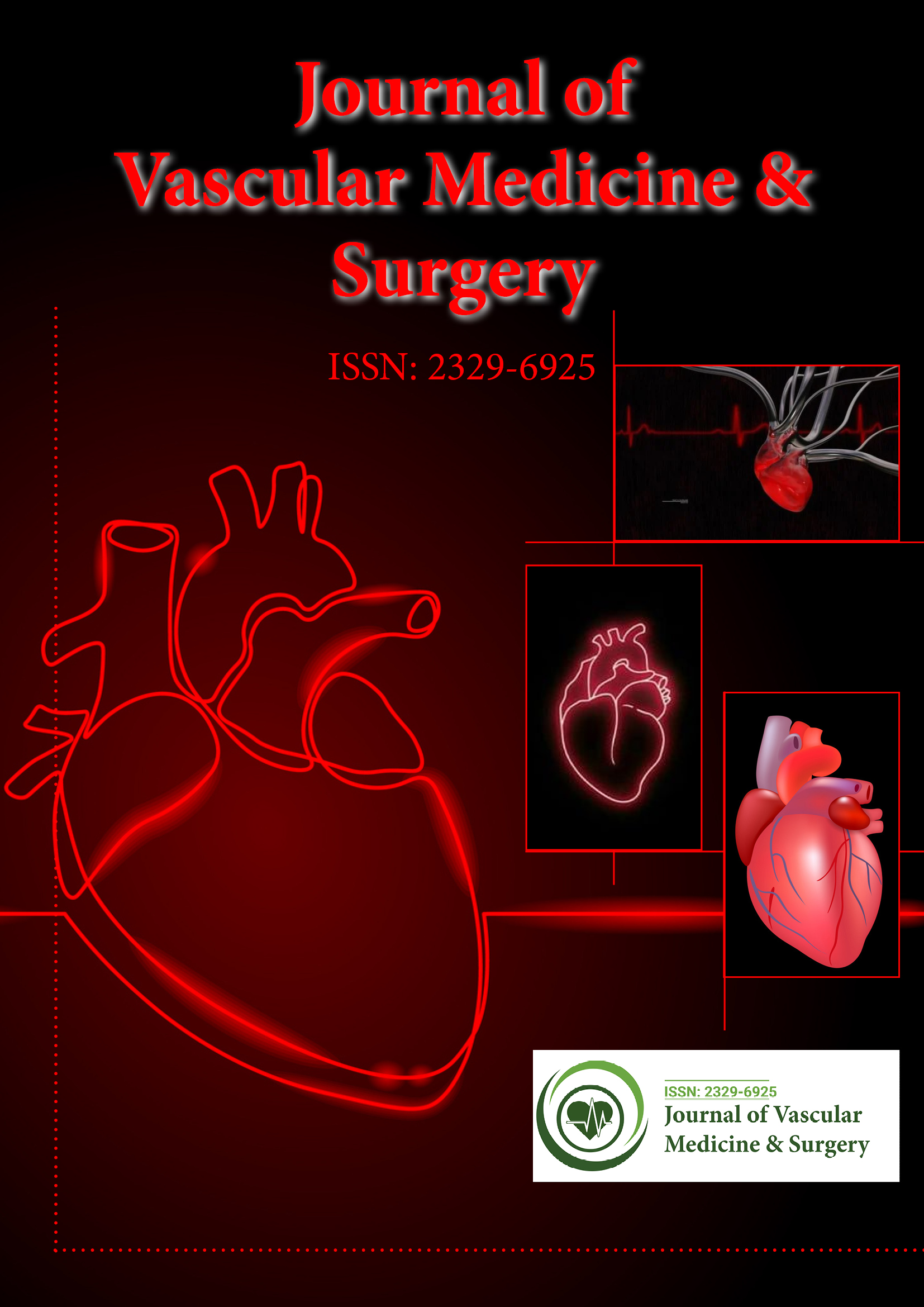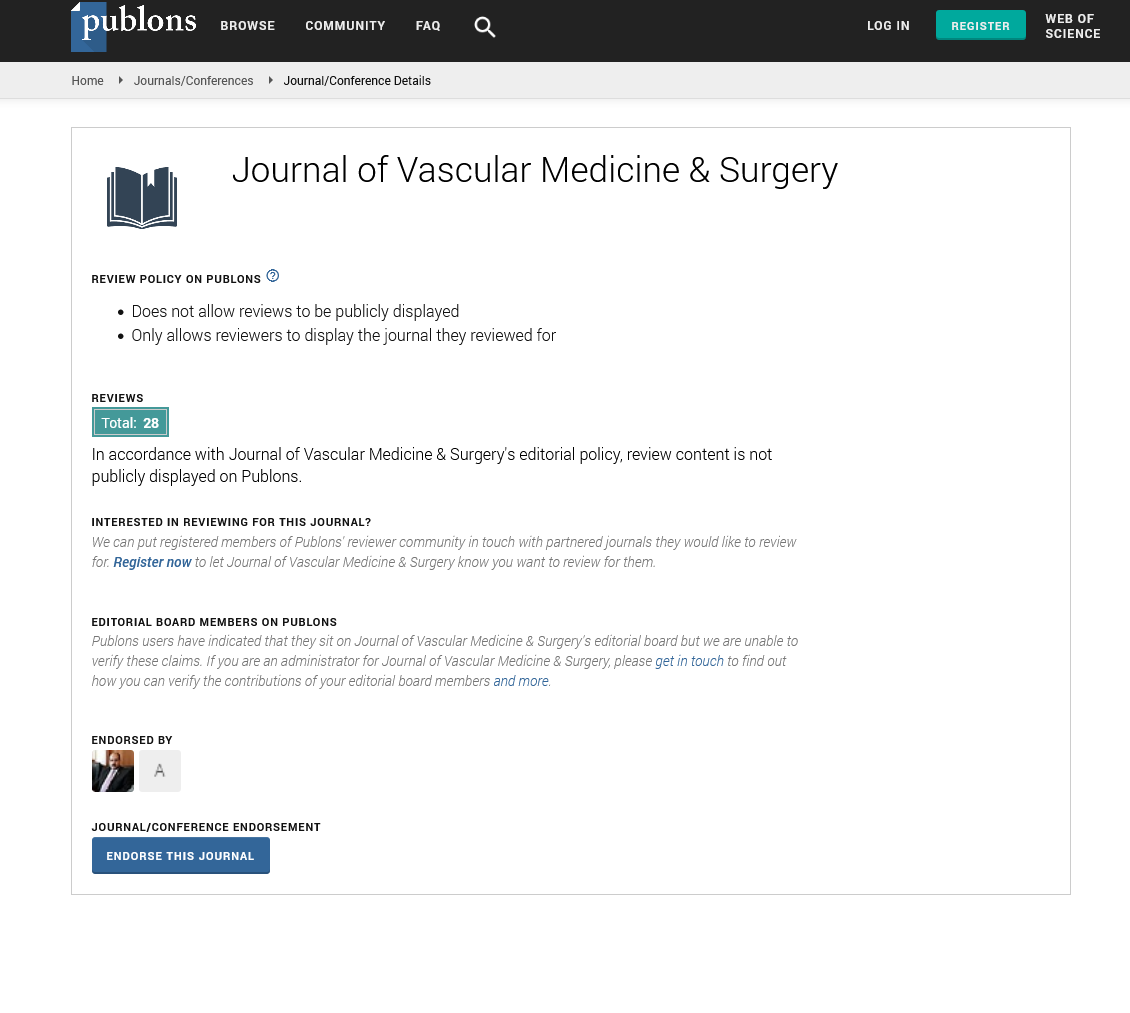Indexed In
- Open J Gate
- Academic Keys
- RefSeek
- Hamdard University
- EBSCO A-Z
- OCLC- WorldCat
- Publons
- Euro Pub
- Google Scholar
- SHERPA ROMEO
Useful Links
Share This Page
Journal Flyer

Open Access Journals
- Agri and Aquaculture
- Biochemistry
- Bioinformatics & Systems Biology
- Business & Management
- Chemistry
- Clinical Sciences
- Engineering
- Food & Nutrition
- General Science
- Genetics & Molecular Biology
- Immunology & Microbiology
- Medical Sciences
- Neuroscience & Psychology
- Nursing & Health Care
- Pharmaceutical Sciences
Commentary - (2025) Volume 13, Issue 6
Fontan-Associated PVD: A Closer Look with OCT
Sandrin Hanir*Received: 21-May-2025 Editor assigned: 25-May-2025 Reviewed: 06-Jun-2025 Revised: 13-Jun-2025 Published: 20-Jun-2025, DOI: 10.35248/2329-6925.25.13.603
Description
The Fontan procedure is a life-extending surgical innovation developed for patients with complex congenital heart disease characterized by single-ventricle physiology. Although it improves survival, it introduces significant hemodynamic changes, particularly due to the absence of a subpulmonary ventricle and the establishment of a non-pulsatile, low-pressure pulmonary circulation. Over time, these physiological changes predispose patients to Fontan-associated Pulmonary Vascular Disease (PVD), a major cause of morbidity and long-term complications. Unlike classical Pulmonary Arterial Hypertension (PAH), the pulmonary vascular remodeling observed in Fontan patients is characterized by intimal hyperplasia, medial thinning and loss of vascular smooth muscle cells. This distinctive pattern suggests a disease process more aligned with degeneration than proliferation. Traditional diagnostic modalities, such as right heart catheterization, are limited in capturing these subtle structural abnormalities. However, the emergence of Optical Coherence Tomography (OCT) provides a novel, high-resolution imaging modality capable of visualizing intravascular microarchitecture with exceptional clarity.
OCT insights into Fontan-associated PVD
A recent pilot study involving nine adult Fontan patients utilized OCT during routine cardiac catheterization to assess pulmonary artery wall structure. The findings demonstrated a marked elevation in the intima-to-media thickness ratio, with values exceeding 2.8 in patients exhibiting increased Pulmonary Vascular Resistance (PVR). This correlation suggests a potential role for OCT as a biomarker in evaluating hemodynamic burden in this population.
Importantly, the study found no consistent association between the duration since Fontan completion and the degree of vascular remodeling. This highlights the multifactorial nature of Fontan-associated PVD, where variables such as hepatic congestion, chronic inflammation, thromboembolism and protein-losing enteropathy may independently affect disease progression. These complexities underscore the need for tools that provide direct anatomical insights—a niche that OCT is uniquely positioned to fill.
Clinical relevance and future directions
From a clinical standpoint, integrating OCT into Fontan surveillance protocols could enhance early detection and risk stratification. Unlike pressure-based assessments, OCT directly images structural vascular changes, offering more granular insights into disease progression. This capability allows clinicians to monitor intimal thickening, wall composition and possibly therapeutic response in real time.
Moreover, OCT findings may guide the timing and type of interventions. For instance, an elevated I/M ratio might prompt earlier initiation of pulmonary vasodilator therapy, even before clinical symptoms manifest. Conversely, patients with stable OCT profiles may be spared unnecessary pharmacologic or surgical escalation. This individualized approach could be particularly impactful as the Fontan population ages and more patients face consideration for heart or heart-liver transplantation.
While the small cohort size limits broad generalizability, the pilot study’s feasibility and safety outcomes are encouraging. OCT was performed without complication, using minimal sedation, even in patients with complex post-surgical anatomy. This positions OCT as a practical adjunct to catheter-based assessments.
The high-resolution imaging provided by OCT enabled detailed visualization of vessel wall morphology, stent apposition and neointimal characteristics, offering insights that surpassed conventional angiography. This level of anatomical clarity may enhance clinical decision-making, particularly in pediatric or congenital heart disease populations where anatomical variations are common. Furthermore, the procedural efficiency and low complication rate observed in this initial study support the integration of OCT into routine diagnostic workflows.
Future studies with larger cohorts and longer follow-up are essential to validate these preliminary findings, assess the long-term clinical impact and establish standardized protocols for its broader implementation in pediatric interventional cardiology. Several research questions remain unanswered. These include the temporal progression of intimal thickening, the reversibility of vascular changes with therapy and the prognostic value of specific I/M thresholds. Addressing these questions will require larger, multicenter trials with longitudinal follow-up and integration with clinical endpoints.
Conclusion
Fontan-associated pulmonary vascular disease presents a distinct pathophysiological entity that challenges conventional assessment tools. Optical coherence tomography offers a promising avenue to visualize and quantify pulmonary vascular remodeling in unprecedented detail. While early in its application, OCT holds potential to enhance our understanding of Fontan physiology, support earlier and more targeted interventions and ultimately improve outcomes in a growing adult congenital heart disease population.
In a landscape where late-stage interventions often predominate, OCT represents a proactive diagnostic strategy. Its ability to reveal microscopic structural changes may herald a new era of precision monitoring and early intervention in congenital cardiology.
Citation: Hanir S (2025). Fontan-Associated Pulmonary Vascular Disease: A Closer Look with OCT. J Vasc Surg. 13: 603
Copyright: © 2025 Hanir S. This is an open-access article distributed under the terms of the Creative Commons Attribution License, which permits unrestricted use, distribution and reproduction in any medium, provided the original author and source are credited.

